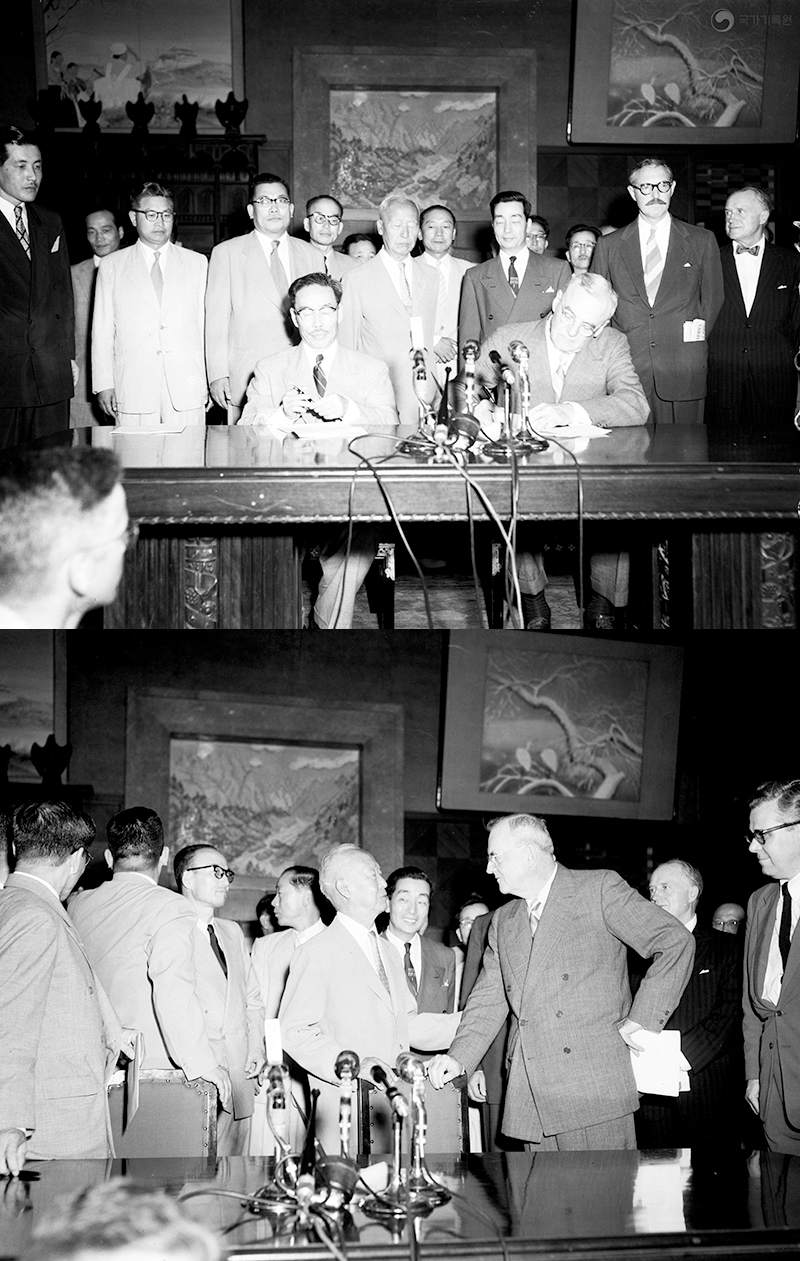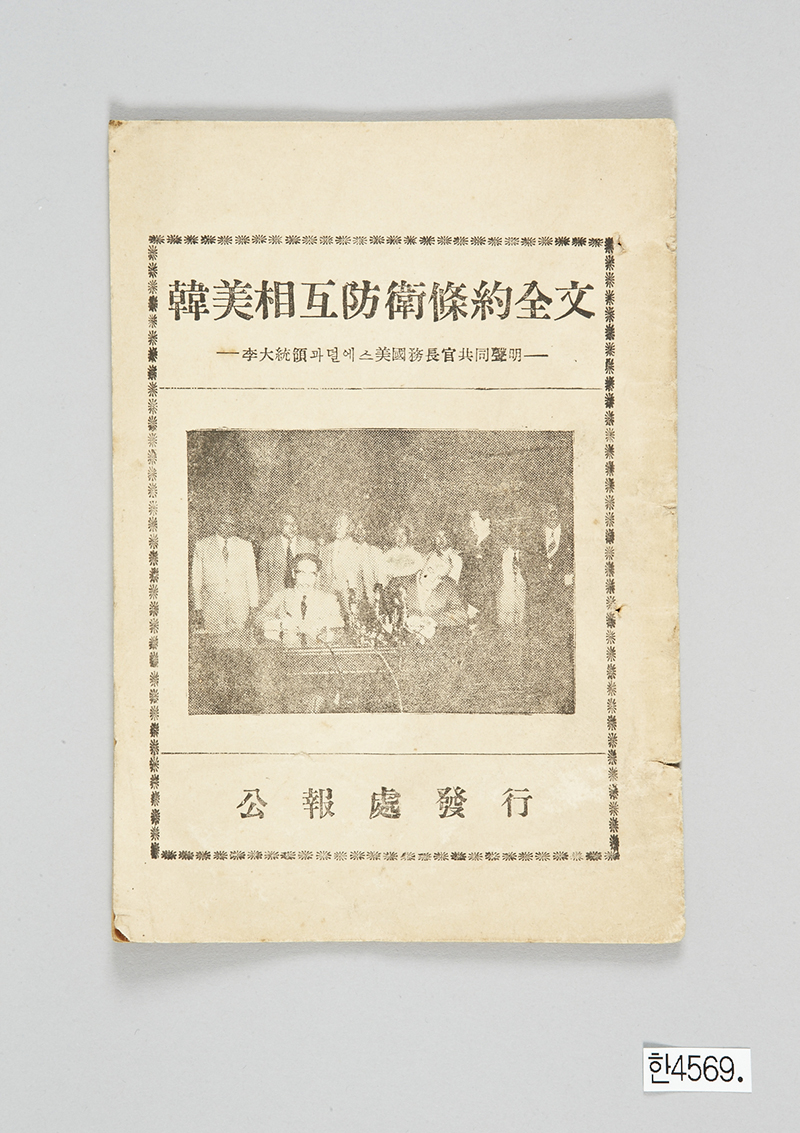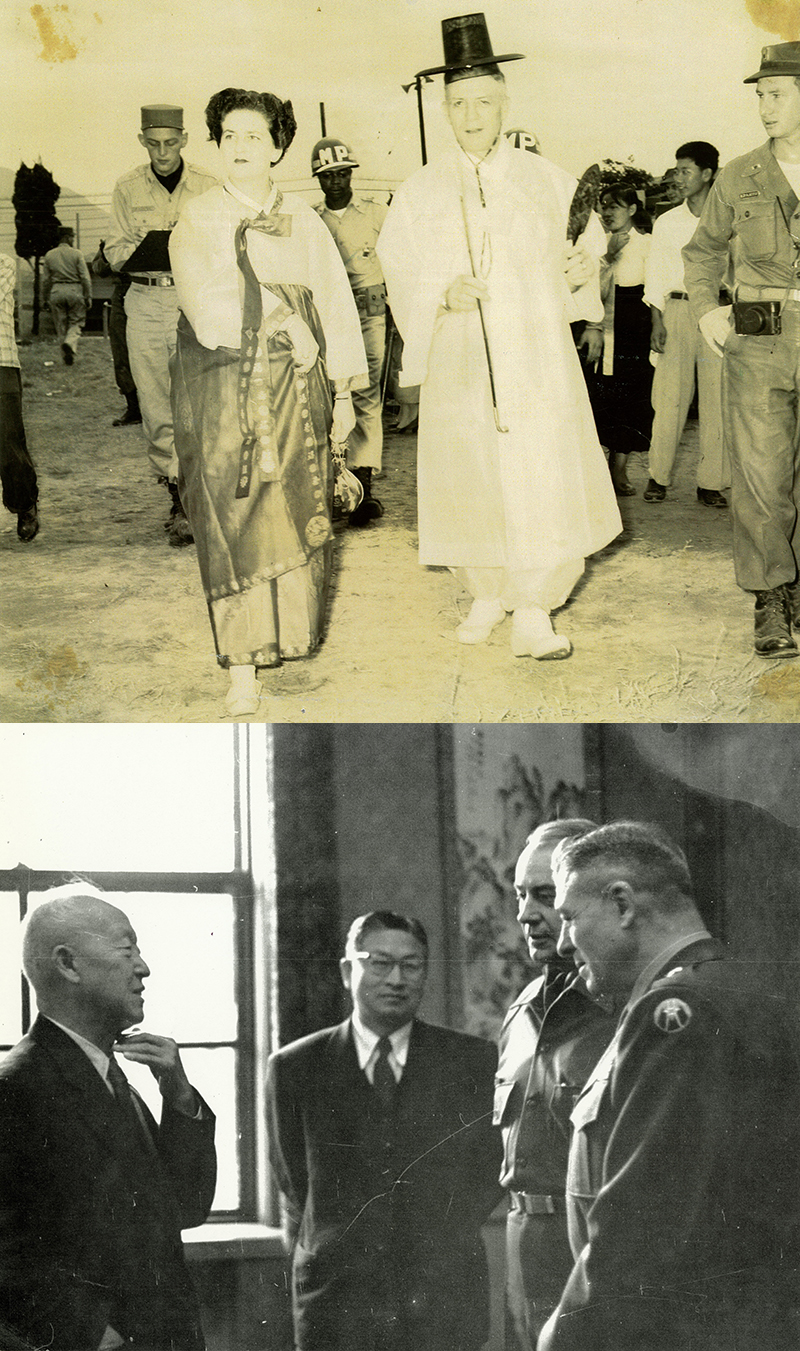[한미동맹 70주년] Korea-U.S. Mutual Defense Treaty Alliance
Alliance: An international agreement in which two or more countries enter into a treaty and promise to act together for a common purpose.
This year marks the 70th anniversary of the ROK-US alliance. Over the past 70 years, despite numerous changes, the ROK-US alliance has firmly kept its promise.
The ROK and the U.S. are continuously expanding the scope and level of alliance cooperation, including security, economy, culture, science, and technology.
Now let’s take a look at the beginning of ‘Alliance in action moving forward into the future’.

The 70-year history of the ROK-US alliance was born during the Korean War.
On June 25, 1950, when the Korean War broke out due to North Korea’s surprise invasion of the South, the United States immediately requested a meeting of the UN Security Council.
Later, according to the UN Security Council resolution, with the help of a total of 63 donors, including the United States and 16 participating countries, they defended against the aggression of communist forces, but failed to achieve unification and an armistice agreement was signed in 1953.
At the time, President Syngman Rhee, who opposed a truce without reunification on the Korean Peninsula, started diplomatic negotiations with the US government, who wanted an early end to the war. He emphasized the necessity of signing a defense treaty between the United States and South Korea to guarantee the security of Korea after the war.
After negotiations between the two countries, on August 8, 1953, the ‘Korea-U.S. Mutual Defense Treaty’ was signed. Then, on October 1 of the same year, the ROK-US alliance was finally formally signed.
However, the ROK-US Mutual Defense Treaty went into effect on November 18, 1954 after the Korea-US summit.

In the preamble of the ROK-US Mutual Defense Treaty, Article 2 states that the two countries will closely consult on security issues.
In addition, Article 3 recognizes the presence of US troops in Korea, while Article 4 recognizes the presence of US forces in Korea.
In Article 6, the treaty was declared valid indefinitely unless notified one year in advance, and the ROK and the U.S. declared that the friendly alliance between the two countries would continue unless there were special reasons.
As stated in the preamble, the Korea Mutual Defense Treaty is aimed at preventing a second aggression against South Korea, and has played an important role in preventing North Korean provocations over the past 70 years.

The specific measures to implement the ROK-US Mutual Defense Treaty were reaffirmed in the ‘Agreement Minutes between the United States and the Republic of Korea on Military and Economic Assistance to Korea’ agreed on November 17, 1954.
The final size of the Korean army and military aid from the United States were stipulated. agreed to provide assistance.
As a result, until the 1960s, the military aid provided by the US to Korea reached 300 million dollars annually. It has been confirmed that this was equivalent to 87% of South Korea’s defense budget at the time.
Due to the outbreak of the war, US aid to Korea was focused on military aid rather than economic aid, but it also included various activities for emergency relief and war recovery.
It is evaluated that this was a driving force in maintaining and developing the ROK-US alliance more firmly after the armistice beyond the level of conducting combined operations in war.
In particular, US General Richard Whitcombe is considered a symbolic figure in expanding and developing the ROK-US alliance beyond the military alliance into various fields such as education, welfare, and culture.

During the Korean War in 1953, General Whitcomb, who first stepped on Korean soil after being appointed commander of the US 2nd Military Base in Busan, devoted himself to the reconstruction of Korea after the war.
During the Busan Great Fire in November 1953, General Witcom opened military supplies to 30,000 victims, providing tents and food.
For this reason, he was summoned to the US Congressional hearing, but General Whitcomb said, “War is not fought only with guns and knives. Serving the people of that country is the true victory,” he said, receiving a standing ovation from lawmakers.
Feeling the need for improvement due to the poor medical environment in post-war Korea, General Whitcomb put a lot of effort into building several medical institutions. While struggling to raise funds for the US military aid measures, he also led a campaign to donate 1% of his monthly salary with each unit member for the construction of a hospital.
General Whitcomb had a great interest in and affection for education. He accepted the request of Pusan National University’s first president, Yoon In-gu, to help build Pusan National University, and persuaded the Korean government to help him receive 500,000 pyeong of land in Jangjeon-dong for free. He also reportedly paid $250,000 for the college’s construction.
After retiring as a general in 1954, General Whitcombe remained in Korea and served as a political advisor to President Syngman Rhee, playing an important role in US-ROK relations.
General Whitcombe, who left the words, “I want to be buried in Korea even after I die,” is the only general buried at the UN Memorial Cemetery.

The USFK, which is considered a symbol of the ROK-US Mutual Defense Treaty and the ROK-US alliance, has been deployed north of Seoul to deter North Korean re-aggression on the Korean Peninsula since the war and to ensure South Korea’s security.
However, the size of the USFK stationed has changed due to changes in the US strategy according to the security situation.
After the adoption of the Nixon Doctrine by the then Nixon administration in 1969, the reduction of US forces in Korea took place. As a result, the number of USFK troops in Korea decreased from about 62,000 by the end of the 1960s to about 41,000.
Afterwards, US President Carter also advocated a reduction and phased withdrawal of US forces in Korea, but the USFK reduction was halted after a visit to Korea in 1979.
Among them, the ROK-US Combined Forces Command (CFC) was established on November 7, 1978 to supplement the military vacuum caused by the partial withdrawal of USFK, relieve unrest in Korea, and conduct efficient ROK-US combined operations.
President Carter’s plan to reduce the USFK served as the background for the establishment of the ROK-US Combined Forces Command, but the significance of the establishment can be found in that the ROK-US alliance was institutionally consolidated through the establishment of a combined defense system that can integrate and manage the military forces of both countries.
In particular, by sharing advanced scientific equipment operation and systematic organizational management techniques, it has been evaluated that it has provided an opportunity to help the ROK military in information analysis, command system development, and operational capability.

The ROK-US Combined Forces Command had been stationed at the Yongsan Garrison in Seoul for 44 years since its establishment, and completed its relocation to the Pyeongtaek Garrison in October of last year.
Previously, the ROK and the US Department of Defense agreed on the relocation of the CFC to Pyeongtaek at the defense ministers’ meeting in June 2019, and declared the “completion of the CFC relocation within 2022” at the 53rd ROK-US Security Consultative Meeting (SCM) held in December 2021.
Meanwhile, President Yoon Seok-yeol sent a congratulatory message to the 44th anniversary of the ROK-US Combined Forces Command held at Camp Humphreys last year and the completion of relocation. It has successfully carried out its defense mission.”
As such, the 70-year history of the ROK-US alliance began to prevent North Korean provocations and ensure the security of the Korean Peninsula.
Although Korea and the United States are expanding the horizon of cooperation by continuing various forms of strategic alliance amidst numerous changes, the most fundamental purpose of the alliance, the ROK-US joint exercises and training for military security, represents the solidity of the ROK-US alliance.
Accordingly, in the next part, we will shed light on the changes in the ROK-US combined exercises and training that played a major role in becoming the ROK-US alliance, which is evaluated as one of the world’s most successful alliance models.
Policy briefing Seri Yoon
Source: Policy news, link

Comments